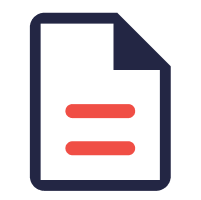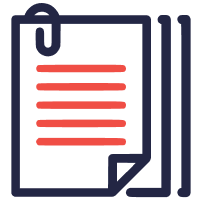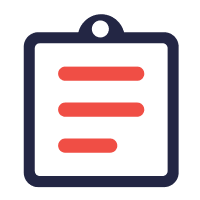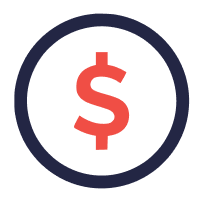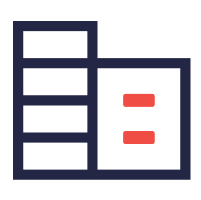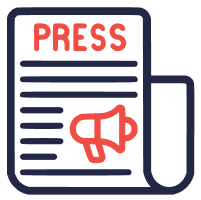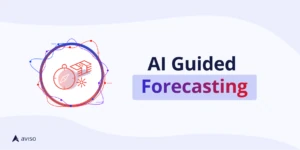Rigorous revenue forecasting is crucial to driving growth and to conveying confidence to your Board or Wall Street that your business is supported by a reliable forecasting machine that will scale well for future successes. However, most companies rarely meet forecasts. By making lowball forecasting a self-fulfilling prophecy, companies are leaving substantial value on the table. In other words, spreadsheet forecasting only reveals the tip of an iceberg of revenue: there is tremendous financial value to be unlocked if you can bring the entire iceberg to the surface.

Trustworthy sales forecasts are linked to a 25% increase in YOY revenue performance. Evidently, enterprises can generate incredible value by investing time and money into their forecasts – as long as they’re reliable. Spreadsheet forecasting is notoriously fickle, but is by far the most popular method of forecasting across all industries. McKinsey & Co reports that only 8% of CFOs express complete satisfaction with their forecasts, and the remaining cite the huge time sink and overall inaccuracy as major complaints. 
AI guided selling has its place as a solution for each of the different roles in a revenue team – guided deal navigation for reps, guided sales coaching for managers, and guided forecasting for sales operations. This article will explore the role that AI guided forecasting plays in solving the main issues rampant in traditional spreadsheet-based forecasting. Here are the top three reasons why businesses need to move on from spreadsheet forecasting:
1. Spreadsheet forecasting is prone to human error.
“Errors in spreadsheets are pandemic,” writes researcher Ray Panko, whose audit revealed that 91% of spreadsheets contain important errors. Despite our best wishes , faulty formulas and data entries can easily infiltrate spreadsheets. Managers must trust their sales team to consistently and competently clean up their data, which may not be feasible. Filled with holes and clouded with human bias, these spreadsheet-based forecasts are fickle and costly: it only takes one faulty formula or a handful of mis-entered data points to throw off your forecast, undermine the credibility of your sales team, and precipitate massive financial loss. Natural human biases, rep turnover, policy changes – if companies are even slightly lax in making sure that their data is up to code, these factors can have a major negative impact on the forecast accuracy.
2. Forecasts are largely overestimated.
Hubspot reports that only 19% of deals across all industries are actually closed -- with the finance industry claiming a 19% deal closure, IT with a slightly higher percentage at 21%, and healthcare at a low 17%. These low closure averages reveal a severe overestimation in predictions. You wouldn’t rely on your weather app if it was wrong 6 out of 7 days a week, so why settle for the same inaccuracy in your revenue forecasting? A major reason for this is underlying cognitive bias, which can cause wildly inaccurate forecast data entry. Many sales reps struggle with overconfidence bias, anchoring bias, and correspondence bias (also known as Fundamental Attribution Error). Unfortunately, underlying human nature can lead reps to believe that they have special ability, that they're exempt from statistical averages, or that sales is a game in which past behavior has little impact on their present choices.  A significant portion of B2B tech companies still uses a combination of CRM data and spreadsheets to produce their forecasts. CRM reports, however, can only tell an incomplete story about the state of your business and are more than likely to be skewed by blind spots such as backdating and inaccurate listings. When combined with this distorted data, precarious spreadsheets can compound upon existing errors and displace predictions far from their actual truth value.
A significant portion of B2B tech companies still uses a combination of CRM data and spreadsheets to produce their forecasts. CRM reports, however, can only tell an incomplete story about the state of your business and are more than likely to be skewed by blind spots such as backdating and inaccurate listings. When combined with this distorted data, precarious spreadsheets can compound upon existing errors and displace predictions far from their actual truth value.
3. Spreadsheet forecasting does not factor in social and economic volatility.
Black Swans like Covid-19 are extremely difficult to predict, much less forecast for. The particularly ever-shifting landscape of the digital era means that sales teams cannot simply rely on historical data to inform predictions. The pandemic has introduced new, unpredictable variables into the sales equation that are nearly impossible to model on Google Sheets. Moreover, organizations each employ their own unique way to predict revenue, with the most common methods including opportunity stage, intuitive, and historical forecasting. However, changes in both internal and external variables can easily throw these single-source predictions off. Multivariable forecasting is necessary to sufficiently address the dynamic nature of sales but is also incredibly complicated to execute consistently and competently on spreadsheets. Despite these challenges, there is hope: McKinsey reports that guided selling rooted in multivariate machine learning and objective artificial intelligence can greatly reduce CRM pain points and re-orient forecasts. Once businesses overcome the initial barriers of data quality, human bias, and employment reassurance, they can embrace the linear course to success with a crystal-clear, AI-powered forecast.

Here’s how AI guided selling addresses the issues of spreadsheet forecasting and can help as a catalyst for businesses to grow confidently:
1. Optimize Operations and Sales Resources for Higher Value-Added Tasks
No more fatigue of Friday afternoons spent staring at a swimming soup of numbers -- AI removes this burden and increased likelihood of cognitive error. Instead, advanced Auto-Machine Learning algorithms can cut down on 30% of the large allocations of time, money, and human labor spent on data entry and complicated calculations. Data is efficiently aggregated and analyzed for sales teams, who can focus on closing deals instead of chaperoning their CRM. For operations teams, AI forecasting helps to hone in on forward-facing what-if scenario planning instead of looking in the rearview mirror and focusing on past behaviors. For sales teams, AI guidance can help cultivate effective strategies on how to beat the quarter instead of meandering discussions about deals that would only help them reach the minimum quota target.
2. Make 98%+ Accuracy the Default and Permanently Raise the Bar
Algorithms can approach the objective truth with far more accuracy than spreadsheets can – such as with Aviso’s 98% accuracy in predictive forecasting. Compared to the 19% industry-wide deal close rate, the near-perfect accuracy of data-driven AI is leaps and bounds ahead of manual human calculation, and can greatly mitigate the huge financial risk of human error and overestimation. Aviso AI is a robust, multivariate solution, informed by multiple sources and perspectives rather than solely CRM. Utilizing big data and advanced machine-learning algorithms, Aviso incorporates factors of socioeconomic shift into its prediction and allows flexibility to make modifications for Black Swans. However, human predictions are still valuable: AI guidance is meant to inform forecasts rather than override, to offer a more objective point of view into the win-rate of your deals. Users at every level of the sales hierarchy -- from CFOs to operations to managers to reps -- can compare their own predictions with that of the AI.
3. Align Best of Human and AI Strengths to Capture all the Value in a Quarter
A lack of data alignment can be particularly risky, especially when it involves the private information of a large number of people. With one universal AI-guided sales software, forecasts and changes are implemented across all levels and data sets. Different departments and levels of hierarchy can work together to mitigate the effects of Black Swans. In addition, these dynamic forecasts keep you on track towards your revenue goals. Like an Apple Watch tracks your vitals and alerts you of health irregularities, Aviso AI monitors your sales activities, ensuring that they stay on track, and sends alerts so that your team can course-correct when needed. Aviso provides actionable nudges to increase chances of deal closure, easy access to forecast rooms for in-depth discussion, and SmartTranscriptions of forecasting calls to align what was discussed versus what is actually done. With data-driven AI guidance, your sales teams can escape the risky business of spreadsheet forecasting, clearly discern the efficacy of their actions, and gain an in-depth understanding of deal closures. Interested in learning more about AI guided selling? Check out how Aviso has helped Fortune 500 enterprises improve the accuracy of their sales forecasts.

















 BY USECASES
BY USECASES
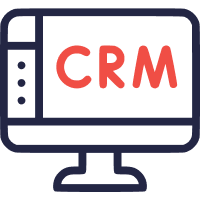 BY CRM INTEGRATION
BY CRM INTEGRATION
 COMPARE
COMPARE
